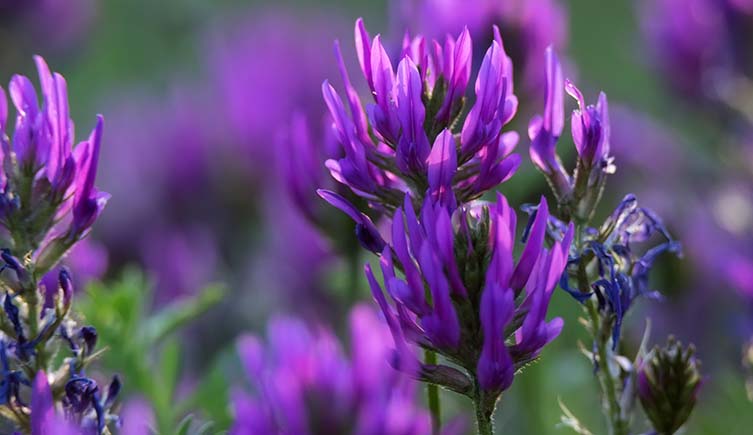Some of the world’s most species rich flowers are right beneath our feet.
Dandelions, buttercups and brambles are among the megadiverse groups of flowering plants which might help to answer some of the biggest questions in botany.

At the last count, there were 2,387 dandelion species in the Taraxacum genus. Image © nadia_if / Shutterstock.
Some of the world’s most species rich flowers are right beneath our feet.
Dandelions, buttercups and brambles are among the megadiverse groups of flowering plants which might help to answer some of the biggest questions in botany.
The diversity of plants is lopsided, but not in the way scientists thought.
The tropics are some of the most diverse areas of the world, with many tens of thousands of plant species. It was previously thought that they might be equally diverse in groups of closely related species, or genera, too. But a new study has found that this isn’t the case.
Instead, research into the world’s botanical life has revealed that a quarter of all flowering plant species are found in less than one percent of its genera. These highly diverse groups, which include well-known plants such as the sedges and begonias, contain hundreds to thousands of species.
Rather than being driven by geography, it appears that other as yet unknown factors appear to be in play as to which genera have the most species.
Dr Sandra Knapp is a Natural History Museum scientist and co-author of the new paper. She is a world expert in the megadiverse genus Solanum, which contains plants like potatoes and tomatoes.
“Complicated genera are big and interesting, and are where many fascinating aspects of plant biology lie,” Sandra says. “However, their sheer size means they are sometimes seen as too difficult to study, or just a wastebasket grouping for species that are hard to identify.”
“We’ve shown that most of these genera are not artefacts of taxonomy but real groups that need to be studied. We need to find out how what exactly about their biology made them so diverse, and what that says about the nature of evolution itself.”
The findings of the study were published in the journal Proceedings of the Royal Society Bopens in a new window.

The world's largest plant genus is Astragalus, which represents almost 1% of all named flowering plants. Image © Yakov Oskanov / Shutterstock.
Generally, the groups that species are placed in, known as genera, are relatively small. Many contain just a handful of closely related species, with the big cat family Panthera containing five living species. Some contain just one, with narwhals being the only species in Monodon.
While larger genera are uncommon, they’re not unheard of. For example, there are more than 100 species of bird in the genus Zosterops and over 170 different shrews in the genus Crocidura. Some genera are larger still, with those containing over 500 species called ‘big’ genera and those with over 1,000 deemed ‘megadiverse’.
Sometimes these large genera are a result of species being incorrectly identified, but they’re not always wrong. Previous studies have looked at how the sizes of genera vary across the animal kingdom, and found that different groups show similar patternsopens in a new window in how species are distributed. This suggests that not all large genera are mistakes.
The researchers in the current study turned the focus towards flowering plants. Building on a landmark paperopens in a new window published in 2004, they found that the roughly 13,000 genera of flowering plants also followed the same patterns seen amongst animals, with just 86 being considered big or megadiverse.
Of these groups, the most species-rich is Astragalus, or the locoweeds, which had 3,239 members at the last count. These herbs are closely followed by the dandelions Taraxacum and the Hieracium hawkweeds, which both contain over 2,300 species.
Not only are these genera large, but they’re getting larger. Of all plants described since the year 2000, around 15% are part of just 14 genera of flowering plants, representing a disproportionate amount of newly discovered biodiversity.

There are 865 Eucalyptus species, which has increased by almost 200 in the past 20 years. Image © Benny Marty / Shutterstock.
Sandy believes that this trend is likely to continue as new technologies contribute to an ongoing revolution in botany.
“The development of better molecular tools, as well as the digitisation of herbarium specimens, is helping us to look into these once-overlooked groups,” Sandy explains. “Botanists are also increasingly teaming up with others across the world to untangle these genera, bringing new perspectives to light.”
It’s hoped that, as more species are described, these large genera will provide answers to some of the big questions of how and why species diversify.
“These taxonomic groups can help to reveal patterns of diversity, as their species act like repetitive samples in big genera,” Sandy says. “Are these groups big because they speciate rapidly, or because they have a low rate of extinction? Are they species-rich because of their conjunction of characteristics?”
“We need to find this out, and these megadiverse plant groups could help to provide the answer.”
Dr Peter Moonlightopens in a new window, the study’s lead author, adds, “Big genera represent lineages of flowering plants that have been extremely successful in the game of evolution. Understanding why they became so successful may help us predict how they and other lineages on the tree of life will respond to the ongoing climate and biodiversity crises.
“Given that species in these big genera often have narrow ecological ranges in which they flourish, they may be more likely to be threatened by extinction as and when conditions change. They are a significant proportion of our global biodiversity, so perhaps we need to focus our conservation efforts most keenly on them.”

We're working towards a future where both people and the planet thrive.
Hear from scientists studying human impact and change in the natural world.
Don't miss a thing
Receive email updates about our news, science, exhibitions, events, products, services and fundraising activities. We may occasionally include third-party content from our corporate partners and other museums. We will not share your personal details with these third parties. You must be over the age of 13. Privacy notice.
Follow us on social media